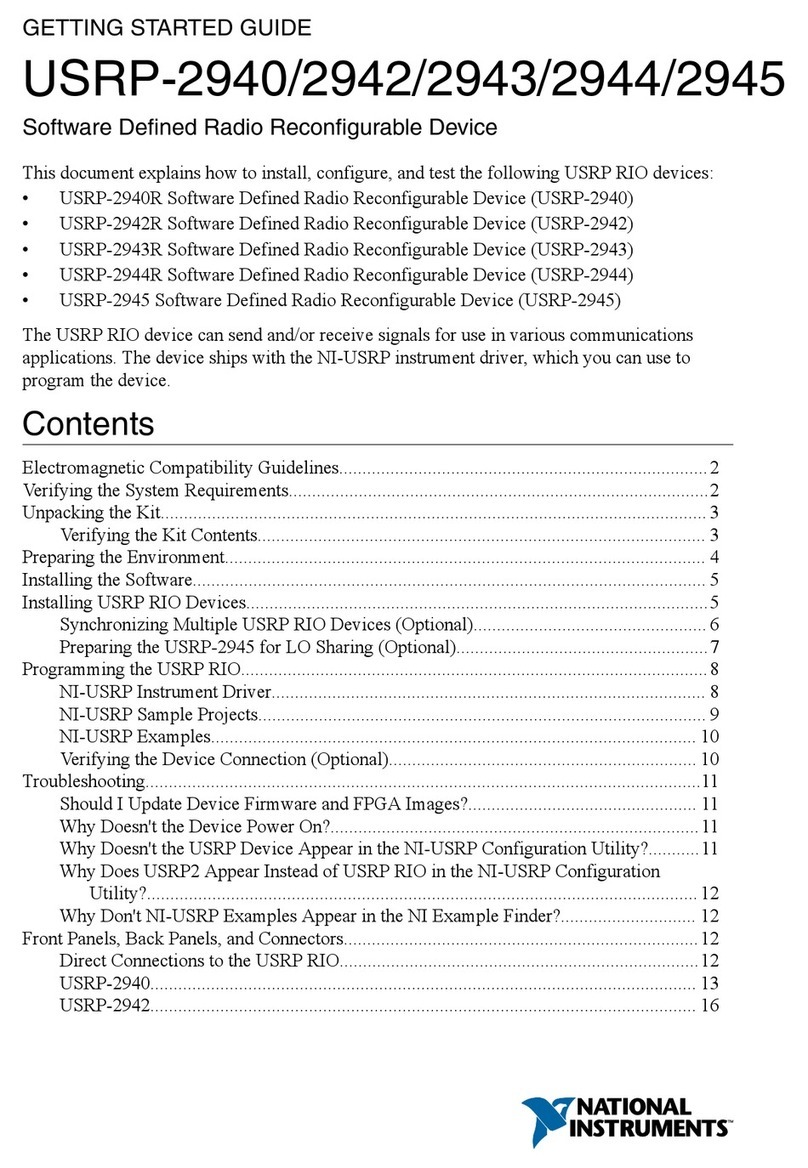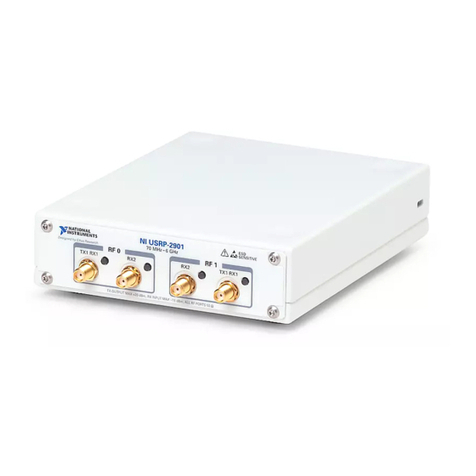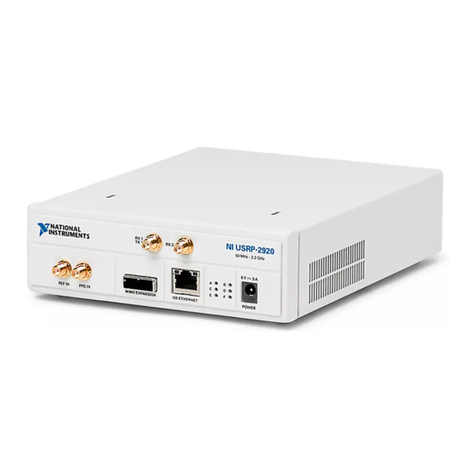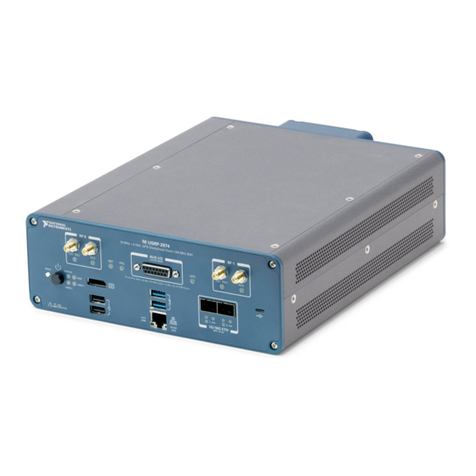
GETTING STARTED GUIDE
USRP-2900/2901
USRP Software Defined Radio Device
This document explains how to install, configure, and test the following USRP devices:
• USRP-2900 Software Defined Radio Device
• USRP-2901 Software Defined Radio Device
The USRP-2900/2901 can send and receive signals for use in various communications
applications. This device ships with the NI-USRP instrument driver, which you can use to
program the device.
Contents
Verifying the System Requirements..........................................................................................2
Unpacking the Kit..................................................................................................................... 2
Verifying the Kit Contents................................................................................................ 3
Environmental Guidelines.........................................................................................................3
Environmental Characteristics.......................................................................................... 4
Installing the Software.............................................................................................................. 4
Installing the Software Using NI Package Manager.........................................................4
Installing the Software Using the Driver Download Page................................................4
Installing USRP-2900/2901 Devices........................................................................................ 5
Configuring the Device.............................................................................................................5
Confirming the USB Connection......................................................................................5
Changing the Device ID....................................................................................................6
Programming the USRP-2900/2901......................................................................................... 8
NI-USRP Instrument Driver............................................................................................. 8
NI-USRP Examples and Lessons......................................................................................8
Verifying the Device Connection (Optional).................................................................... 9
Troubleshooting...................................................................................................................... 10
Why Doesn't the USRP Device Appear in MAX?..........................................................10
Why Doesn't the USRP Device Appear in the NI-USRP Configuration Utility?...........10
Front Panels and Connectors...................................................................................................11
Direct Connections to the Device....................................................................................11
USRP-2900 Front Panel, Back Panel, and LEDs............................................................11
USRP-2901 Front Panel, Back Panel, and LEDs............................................................13
Where to Go Next................................................................................................................... 16
Worldwide Support and Services............................................................................................ 16

































